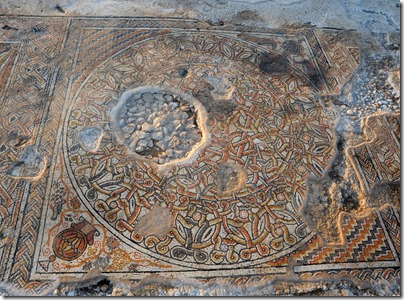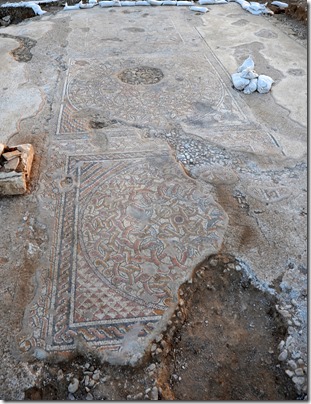Some intrigue surrounded the recent discovery of a well-preserved Israelite proto-Aeolic capital when the tour guide who stumbled across it reported that the authorities told him to keep silent about it, ostensibly for political reasons. For the background and photos, see this report from last April.
This week a story in Arutz-7 claims that the secret location will be revealed next Friday. The article begins:
The location of a major archaeological find that was kept secret until now will be revealed to the public on Friday, next week. The find is being touted as a royal castle that could have belonged to Israel’s most celebrated king – the Bible’s King David.
There are several problems with this sensational report: (1) this type of architecture in Judah dates to several centuries after the time of David; (2) the impressive proto-Aeolic capital is in a water system and evidence of a palace is so far lacking; (3) the location has already been published in D. Ein-Mor and Z. Ron, “An Iron Age Royal Tunnel Spring in the Region of Nahal Rephaim,” in G. Stiebel et al., eds., New Studies in the Archaeology of Jerusalem and its Region, 2013. An abbreviated version is available online in Hadashot Arkheologiyot. (This reference comes from Zachi Dvira, via Joseph Lauer.)
It is possible that by overreaching in claims, the media may obscure the true significance of this discovery. Rather than speak of palaces and David, the comparison should rather be made with Hezekiah’s Tunnel.
(1) Both of these tunnels are water systems that bring water from a spring to a storage pool. (2) These are two of the longest underground water channels in the Judean hills, with Hezekiah’s Tunnel running 1,750 feet and the new one at ‘Ain Joweizeh running about 700 feet. (3) Both date to about the 8th century BC, with the date of the ‘Ain Joweizeh tunnel coming from a comparative analysis of other proto-Aeolic capitals found in Judah and Jordan. (4) Both seem to have royal connections, with the Siloam Inscription in Jerusalem and the royal architecture at ‘Ain Joweizeh.
What was the purpose of the ‘Ain Joweizeh tunnel? The excavators suggest that it may have been connected to “an estate or royal palace similar to Ramat Rahel here during the eighth–seventh centuries BCE; another possibility is a settlement from this period that is mostly buried beneath the farming terraces covering the ravine.” Presumably significant features are not visible on the surface and the excavators did not have the time to begin a large-scale excavation of the area. The proximity of the site to the security wall may complicate present or future attempts at excavation.
The site is located 5.5 miles (9 km) southwest of the Old City of Jerusalem, 3.5 miles (5.5 km) northwest of Bethlehem, and just down the slope to the west of Har Gilo. The map below shows the site circled in red.
Western environs of Jerusalem
Screenshot from Google Earth
Location map and plan of the spring based on Marcus and Ben-Yosef and Ron. Image from Hadashot Arkheologiyot
Proto-Aeolic capital in location
Image from Hadashot Arkheologiyot
Reconstruction of proto-Aeolic capital
Image from Hadashot Arkheologiyot
Another image showing the inside of the tunnel itself is posted at Maariv. (HT: Joseph Lauer)









